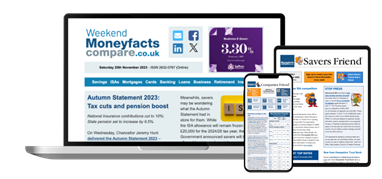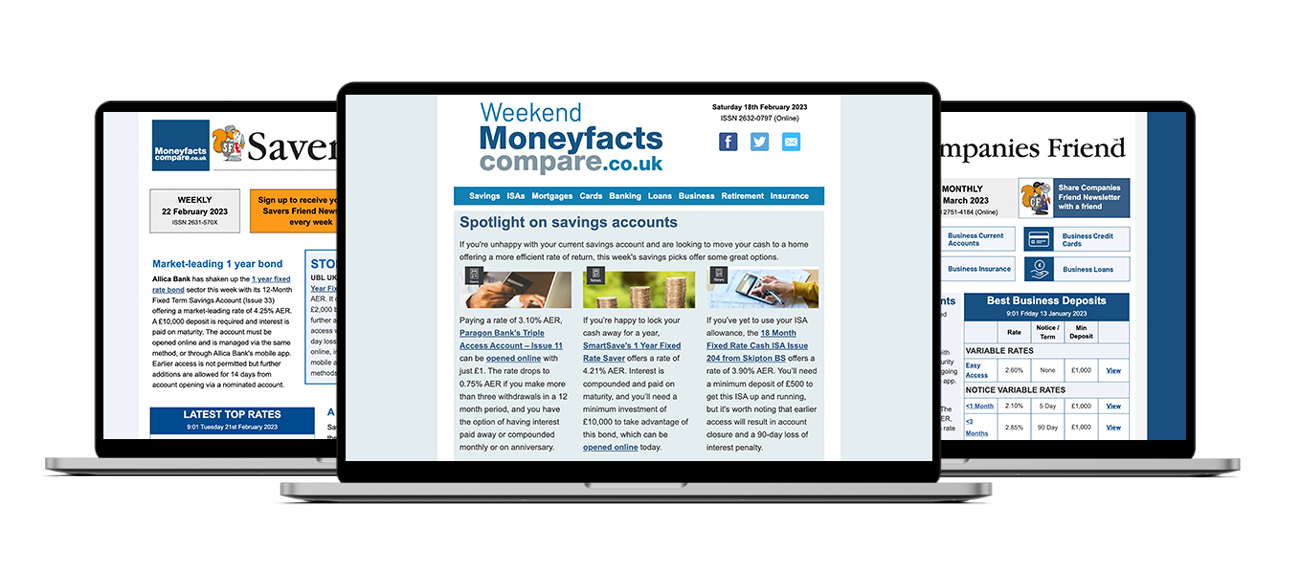What’s the difference between a Lifetime ISA and a regular ISA?
While most ISAs have a range of uses, Lifetime ISAs (LISAs) are purpose-built for saving a deposit for a first home or putting away money for retirement. These accounts come in two forms: either a cash LISA or a Stocks and Shares LISA.
In contrast to other types of ISA, the Government applies a 25% bonus on deposits up to £4,000 a year made into a LISA – a welcome boost to prospective buyers or those looking ahead to retirement. However, whereas most ISAs are available to any UK citizen over the age of 18, LISAs can only be opened by those aged 18 to 39.
Are there ISAs that allow peer-to-peer lending?
Perhaps the least well-known of the four main types of ISA, Innovative Finance ISAs (IFISAs) facilitate peer-to-peer lending. Instead of going through a third-party (such as a bank), this is where your funds are lent out directly to borrowers.
An ideal outcome is that your investment is returned in full – plus interest - by the end of the agreed term, but this isn’t always guaranteed. For this reason, the Financial Conduct Authority (FCA) considers investments held in IFISAs to pose a high risk and, what’s more, they may not be protected by the Financial Services Compensation Scheme (FSCS).
How do ISA interest rates compare to regular savings accounts?
It’s sometimes (but not always) the case that cash ISAs pay lower interest rates than their more traditional counterparts. There are a few possible explanations as to why this is:
- Challenger banks tend to offer some of the most competitive rates as they attempt to entice customer deposits. But, because they’re often new to the market, many initially choose to launch traditional savings accounts rather than ISAs.
- ISAs can be more expensive for a provider to manage as a greater amount of administration is involved in reporting to HMRC and more complex systems are required to enable transfers out.
- Because providers must allow ISAs to be transferred out, they may also factor the potential loss of funds into their pricing. In contrast, withdrawals from fixed bonds are prohibited and early access is also usually denied.
Despite this, an ISA could still be more cost-effective if it’s likely you’ll pay tax on the interest earned from a traditional savings account.
Related guide: Cash ISA or savings account: Which should I choose?
Will ISA interest rates increase in response to market conditions?
Whether the interest rate paid by a cash ISA will respond to wider market conditions depends on the type of account.
Variable rate cash ISAs, such as easy access, notice and some regular savings ISAs, are particularly susceptible to the current economic climate, and any changes to the Bank of England base rate can quickly see returns rise or fall.
Although providers also usually factor market forecasts into their fixed ISA pricing, remember the interest rate you receive won’t change over the course of the term.
Related guide: UK base rate explained – and how to respond to changes
Are ISAs affected by inflation, and how can I maximise protection against it?
While returns on ISAs don’t track the rate of inflation, they can still be used to prevent it eroding the purchasing power of your money (i.e. how much your money can buy).
Good practice is to regularly review your savings portfolio; if an account offers less than the rate of inflation, your money is losing value in real terms, and it may be worth switching to a higher-paying alternative.
How often can I switch providers to find better ISA rates?
ISA transfers make it simple to switch between providers without losing your tax-free benefits.
There’s no limit on the number of times you can transfer from one account to another, but bear in mind while a provider must allow transfers out, they are under no obligation to accept transfers in.
Before making the switch, it’s therefore important to check which types of ISA (if any) your prospective provider accepts transfers in from. To do so, click ‘view further details’ next to a listing on any of our ISA charts. Alternatively, you can change your investment type to ‘ISA transfer’ by selecting ‘full search’.
Are there any limits on transferring between different types of ISAs?
There are no universal restrictions when it comes to transferring between different types of ISAs as it’s at a provider’s discretion which accounts they accept transfers from. The only exceptions are Junior ISAs; these accounts can only be transferred to another Junior ISA.
Keep in mind, fees sometimes apply when transferring between two different types of ISA. If you transfer a Lifetime ISA to a cash ISA, for instance, this will usually incur a 25% penalty. Similarly, a loss of interest penalty may be imposed for transferring out a fixed rate ISA, as this could be seen as accessing your cash before the term ends.
What is the best type of ISA?
The best type of ISA will depend on your personal circumstances, such as the amount of access you need to your cash, your savings goals and your attitude towards risk.
Those looking for guaranteed returns may prefer a cash ISA – with easy access cash ISAs offering the most flexibility when it comes to making further additions and withdrawals.
If you’re saving towards buying your first home or for your retirement, meanwhile, a Lifetime ISA is specifically designed to help meet these goals.
Otherwise, those looking for an investment opportunity and who are willing to put their capital at risk could consider a stocks and shares ISA.
What ISA options exist for people over 60, and what makes them a good option?
The vast majority of ISAs have no upper age restriction; one exception is the Lifetime ISA, which can only be opened by those under the age of 40.
If you’re aged over 60, this means there are still plenty of competitive ISAs to consider. A good option will be that which offers the best returns on your hard-earned cash while meeting any other requirements you may have of the account.
When should I open an ISA?
You can open an ISA at any time, but you need to consider how much you have deposited in ISAs in the current tax-year. If you have used up your annual ISA allowance, you won’t be able to open another ISA until the new tax-year starts and your allowance resets. But, if you want to change accounts or move providers, you may be able to transfer your ISA instead of opening a new one.
You may see more attractive deals on offer towards the end of a fiscal year (5 April) as providers seek custom from savers looking to use up their annual allowance, in a phenomenon known as ISA season.
This trend typically continues into the new tax-year (from 6 April), with providers aware customers have a fresh allowance to distribute. Nevertheless, this doesn’t prevent banks and building societies from increasing rates at other times of the year, either in response to changes to the Bank of England base rate or as they look to raise funds, gain new customers and meet targets.
It’s good practice to regularly review the top ISA rates and consider switching to a new account if you find more competitive returns available.
Are ISAs safe? Is my money protected?
The amount of protection your funds are afforded depends on the type of ISA your money is held in. As with traditional savings accounts, the Financial Services Compensation Scheme (FSCS) protects balances of up to £85,000 in most cash ISAs (although it’s important to remember this limit covers any funds held with providers that operate under the same banking licence).
Similarly, investments of up to £85,000 in a stocks and shares ISA are protected by the FSCS should your provider go bust. It’s important to note this protection doesn’t cover any losses made on your investment.
Equally, returns aren’t guaranteed with an IFISA either. As a form of peer-to-peer lending (P2P), your funds won’t be protected by the FSCS if your provider were to collapse.
Read our guide on FSCS protection to learn more; for more information on providers that share a banking licence, you can also check out our guide to who owns whom.
Are there any ISA alternatives for those who max out their annual allowance?
If you’ve paid the maximum amount into ISAs this tax-year, there are other options you could consider to continue saving tax-efficiently.
- Traditional savings accounts: There’s no limit on the amount you can deposit into traditional savings accounts each year and you won’t be taxed on any interest earned so long as you don’t exceed your Personal Savings Allowance
- Premium Bonds: A savings product offered by the Government-backed brand National Savings & Investments (NS&I) where, rather than receiving interest, bondholders are entered into a monthly draw to win tax-free cash prizes
- Pensions: Savings in a pension will grow tax-free in much the same way as ISAs and, what’s more, you’ll receive tax-relief on your contributions. But, bear in mind pensions pose more risk than cash ISAs as they comprise investments and usually you won’t be able to access your cash until reaching 55 (the current Normal Minimum Pension Age; this is set to rise to 57 from 2028)
- General Investment Accounts (GIAs): Allow you to invest with no yearly cap on contributions. However, you’ll need to pay Capital Gains Tax (CGT) on annual earnings in excess of £3,000 and your capital is at risk.



